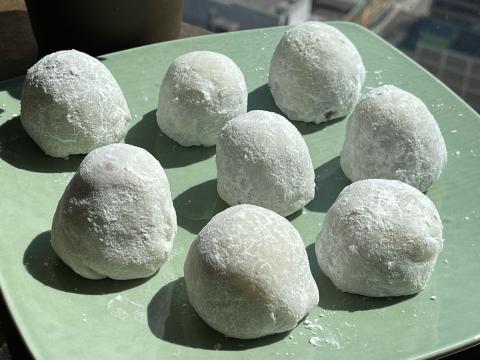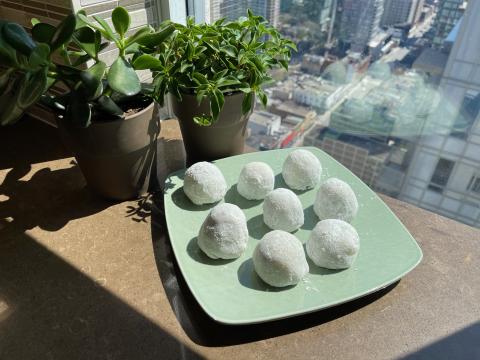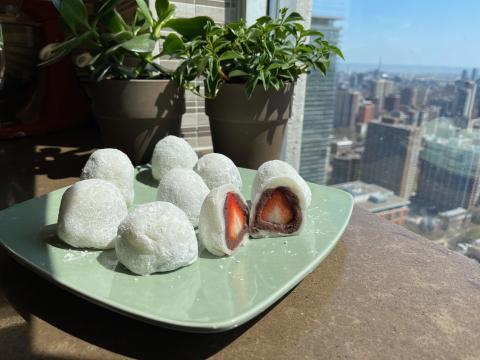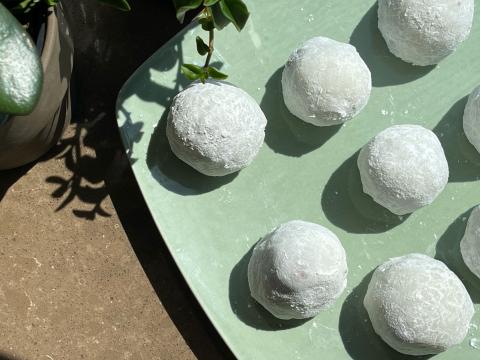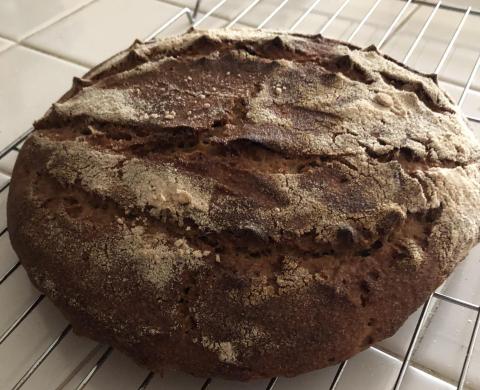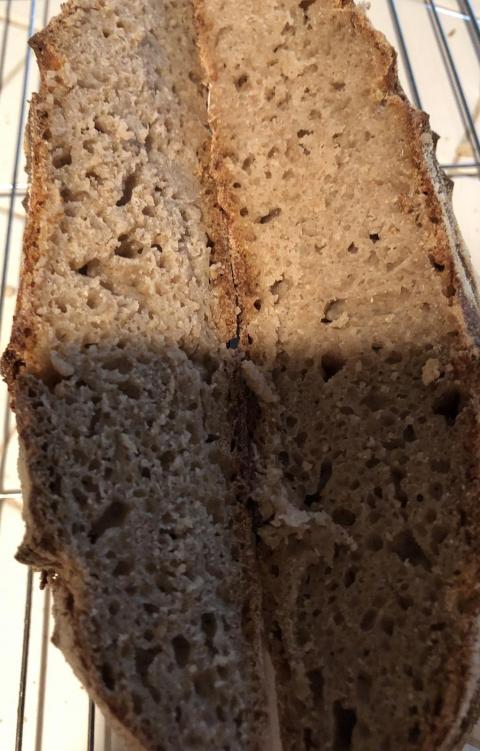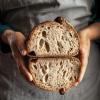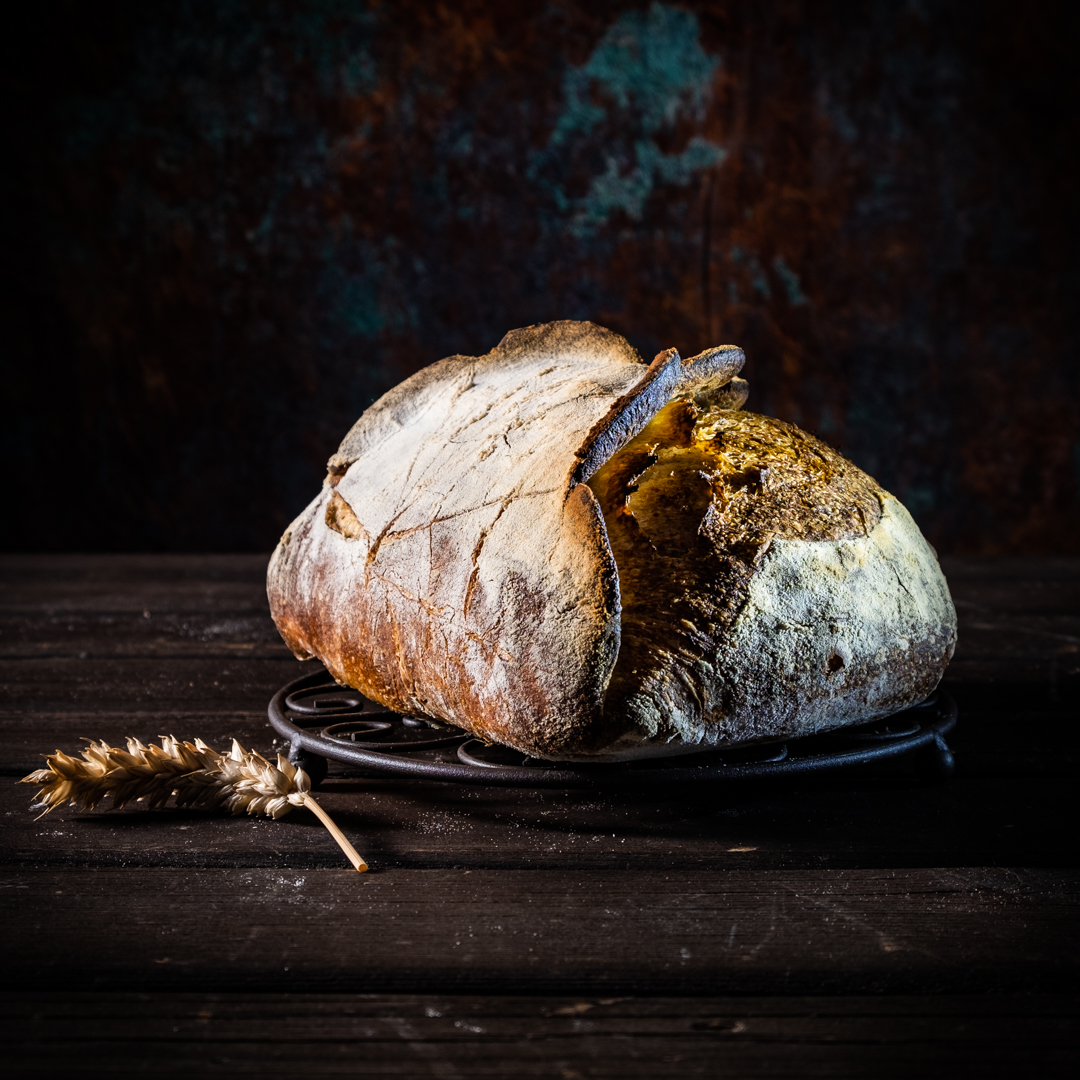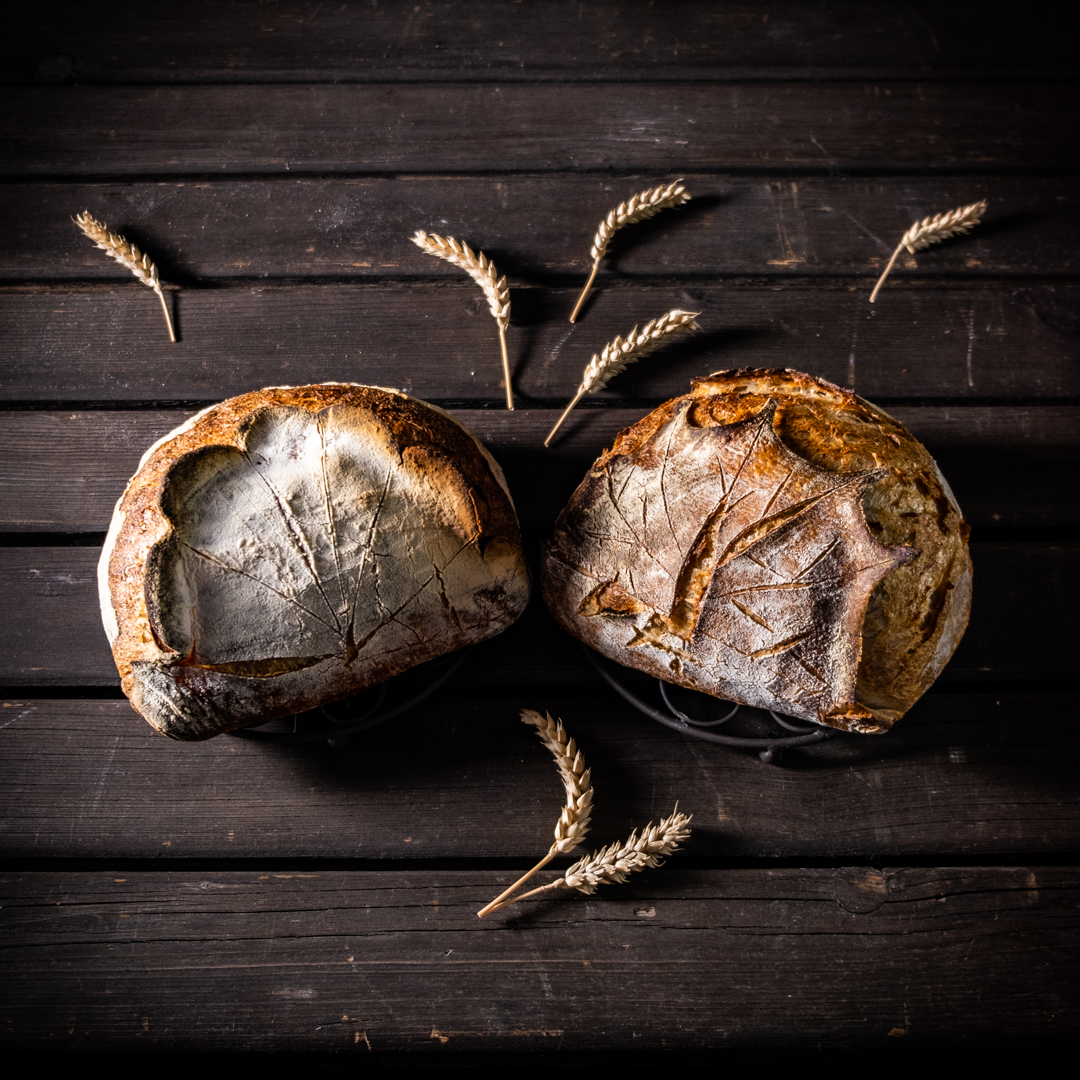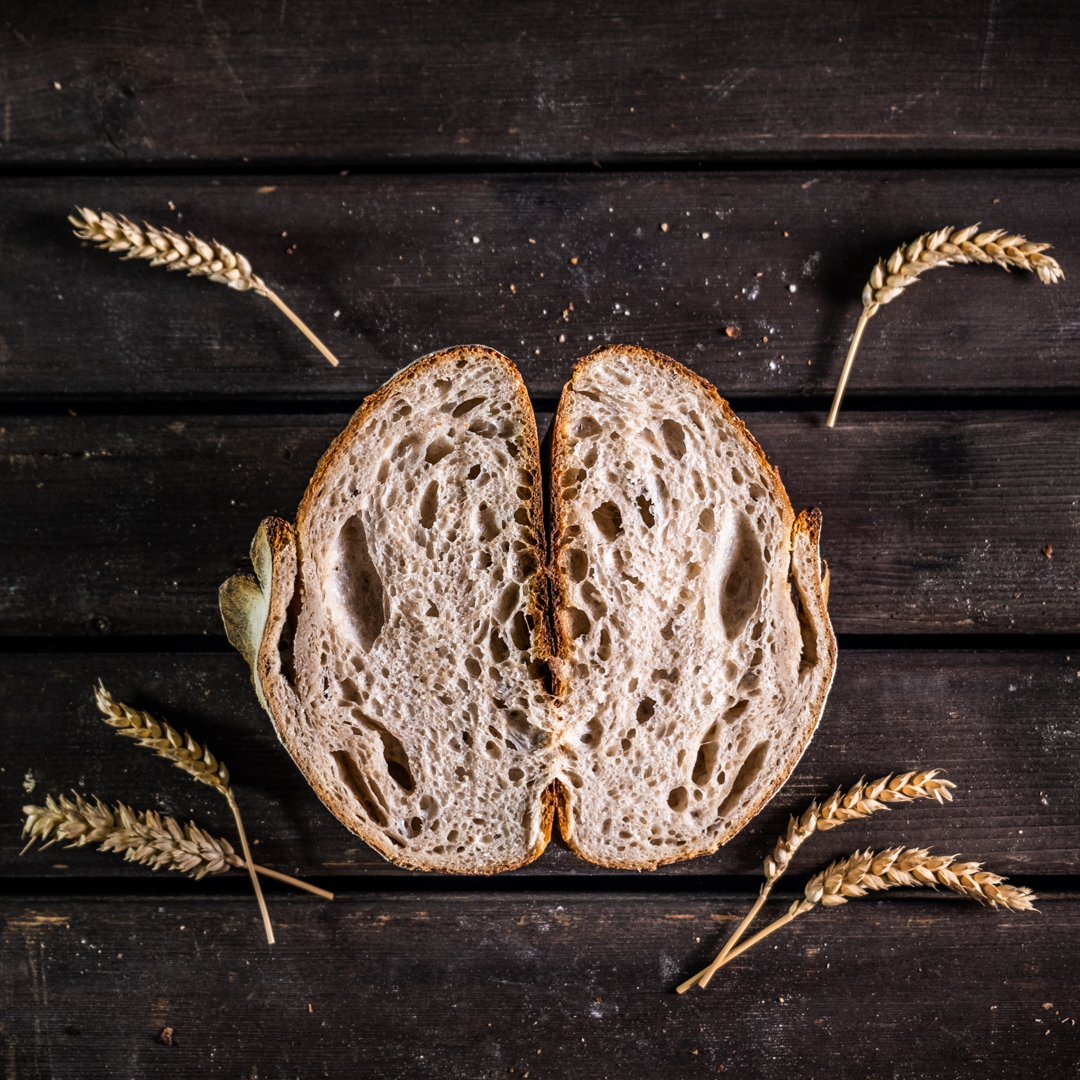My latest attempt at the Tartine #3 White Bread (Ode to Bourdon) on page 46 was equally disappointing.
Though in a different way this time: lack of rise.
Two images attached: the flat loaf; the crumb.
I halved the quantities Chad Robertson suggests; and used the flour types - as discussed here.
In bowl 1:
- 125g All Purpose
- 125g Whole Wheat
- 125g Whole Grain Wheat
- 125g White Whole Wheat
- 35g Wheat Germ
In bowl 2:
- 350g filtered water; less than the 375g specified because of the advice given in this thread.
- 75g of a very healthy, bubbly, lovely-smelling, beautifully risen KAF AP leaven which was poured off from my kept starter and fed at room temperature twice (1:2:2) a day each day for two days before beginning this recipe - and doubled in size.
The starter originated with the KAF kit. But I have been successfully feeding it for a couple of months with KAF organic All Purpose. Usually 1:1:1 twice a week with Britta-filtered water and plastic/silicone tools. Stored in fridge. Always looks and smells what I take to be just right.
Yet it is tempting (to me) to think that - despite this - the starter is just not giving the bread the sustained rise it should… even though at warm proofing (see below) the dough rises very well.
Added contents of bowl 1 to contents of bowl 2; OXO stainless steel. Four hours autolyse at room temperature. Little sign of any appreciable rise. A couple of folds.
Added 13 g salt and just enough water mixed with more starter (room temperature) to make what seemed to me like a nice springy dough. Much more workable than my last attempt, which was far too sticky. I was able to pick up the dough from the bowl this time with two hands. Some tearing. But passed the Window Pane test.
Rotation-folded half a dozen times carefully as on pp 38-39.
Proofed at 80°-85°F in Bród and Taylor for six hours.
Rose significantly (60%-90%) between each fold.
Transferred to brown rice-floured cloth-lined banneton. Covered with cling-wrap.
Transferred to lower shelf of fridge (< 40°F) for eight hours (overnight).
In the morning back to Bród and Taylor 80°-83°F for four hours. No real further rise.
Preheated conventional electric oven (elements top and bottom exposed) to 500°F with Challenger + lid on for 55 minutes.
Removed Challenger from oven. Closed oven door immediately.
Inverted loaf (by now no higher than 3") onto double-folded parchment paper. Dropped out of banneton with ease.
Placed onto shallower Challenger pan. Added three ice cubes. Sizzle sizzle. Put Challenger lid back on. Into oven.
Baked for 15 minutes at 435°F. Oven is 50°F slow. I have two thermometers in oven. Showing that my setting of '485°F' does give exactly 435°F.
Took Challenger pan out of oven; inverted cover/top below pan; back into oven for 30 minutes also at 435°F
Removed from oven. Load very flat. Not at all what I am trying to get.
Over-proofing???
Very grateful for any help anyone can give as to what I may be doing wrong, please :-)










